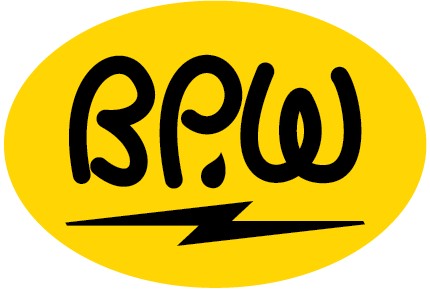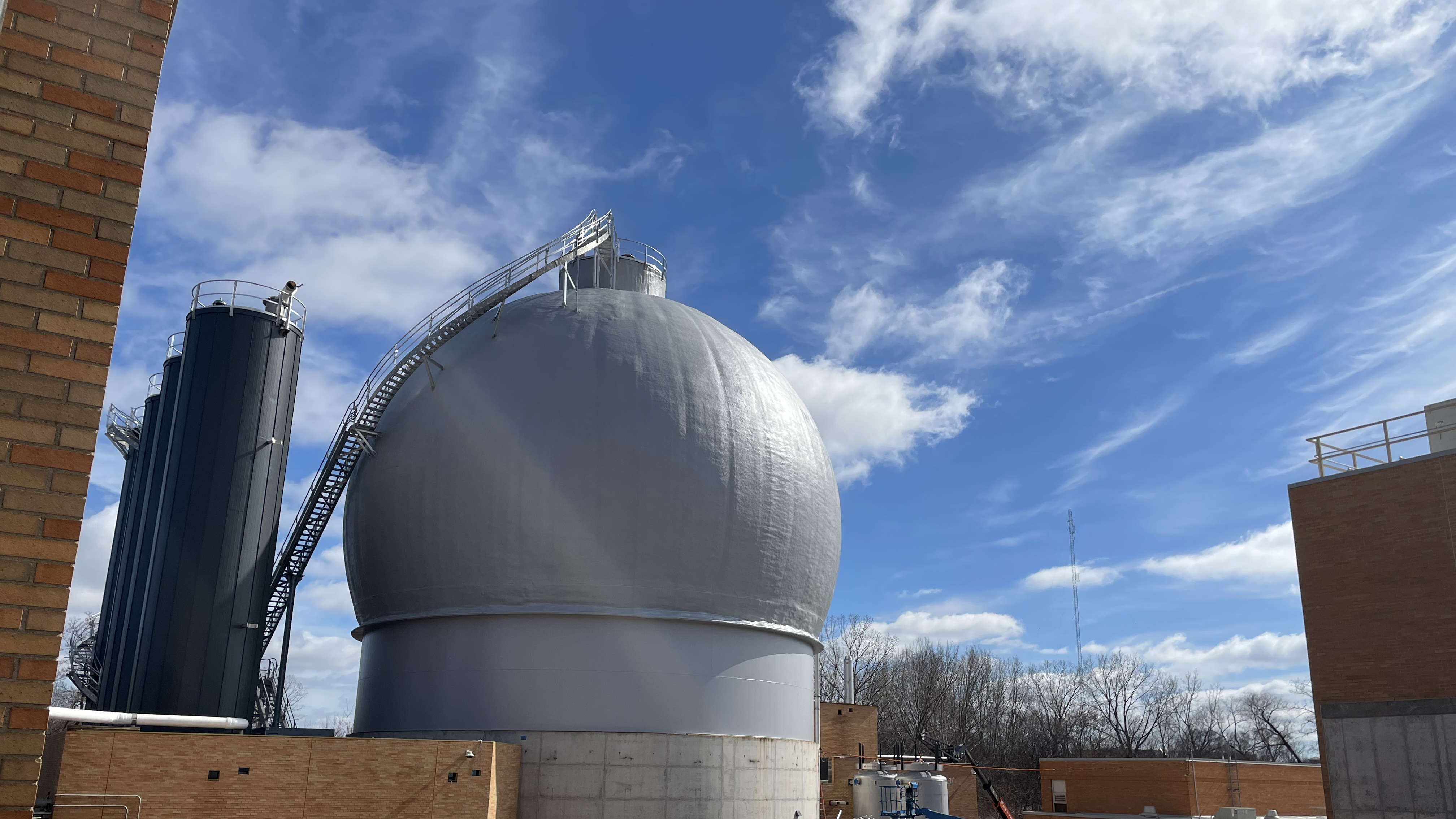Water reclamation is the process of renewing wastewater so that it can return safely to the natural environment.
The Holland Board of Public Works views this responsibility as part of a circular economy, where there is no waste. Our vision is that everything processed at the Water Reclamation Facility becomes beneficial. Nothing truly disappears from the environment, so we strive to take care of every piece of it.
The anaerobic digester is an important part of this puzzle. In downtown Holland, you can see a gray sphere. Inside this sphere, trillions of anaerobic microorganisms are feasting on solids that are a byproduct of the water reclamation process. These microorganisms thrive without oxygen and live to digest those solids, hence the name anaerobic digester.

This digester was the answer when HBPW was faced with a shrinking list of disposal options and skyrocketing costs for dealing with the solids.
Anaerobic digestion was the most sustainable and cost-effective solution. In addition to reducing the amount of solids left at the end of the water reclamation process, the anaerobic digester increases opportunities for beneficial reuse at the Water Reclamation Facility.
Since it started running at the end of last year, we have already seen a positive impact. Lab data shows a 50-55% reduction in the mass of solids. This is both cost effective and more sustainable, reducing the need for disposal and the amount of trucking needed to transport solids to their final destination.
Also, solids take up space at the facility. Now that we have less solids, our plant has room to grow in its existing footprint. This increase in space is necessary to meet our community’s future water reclamation needs.

There are more advantages to the anaerobic digester. As the microorganisms digest their food, they produce methane and convert the remaining solids into a nutrient-rich product known as biosolids. Both methane and biosolids have valuable and beneficial reuse options.
Methane gas generates renewable energy in the form of heat and power. We capture methane in the digestion process and convert it into energy via a Combined Heat and Power Unit installed as part of the digester project.
This unit converts the methane produced in the digester into an average of 500 kW of electricity, or approximately 40 percent of the site’s electric usage. The waste heat from the electric generation is also captured and used to heat the digestion process and two of the buildings on the site.
Regulated biosolids are a renewable resource that add natural structure back into soil. Today, our biosolids are Class B, so we land-apply everything we can to agricultural fields growing crops that are not for direct human consumption; we landfill the rest.
With the digester, our plan is to pursue the Class A Exceptional Quality Biosolids designation from the Michigan Department of Environment, Great Lakes, and Energy. Class A biosolids can be used as a fertilizer or soil amendment nearly anywhere, increasing opportunities for beneficial reuse and eliminating the need to landfill.
Achieving Class A biosolids will help us realize our vision that everything processed at the Water Reclamation Facility becomes beneficial.


